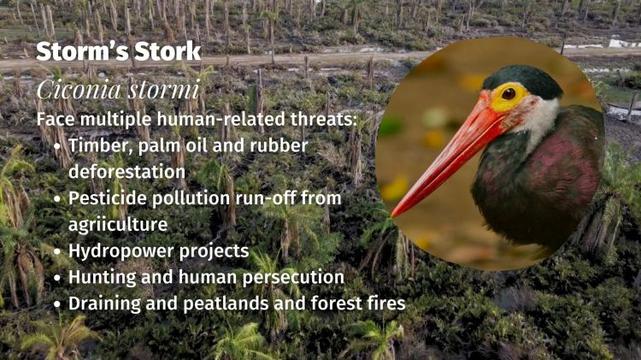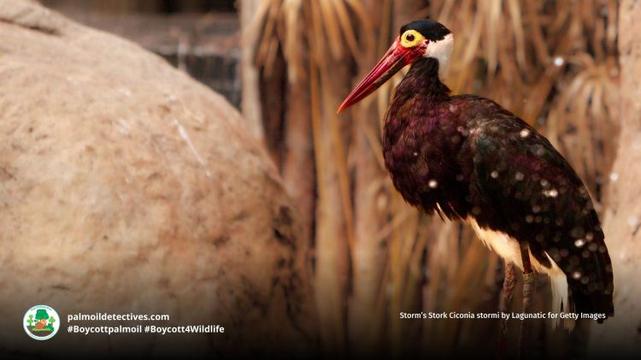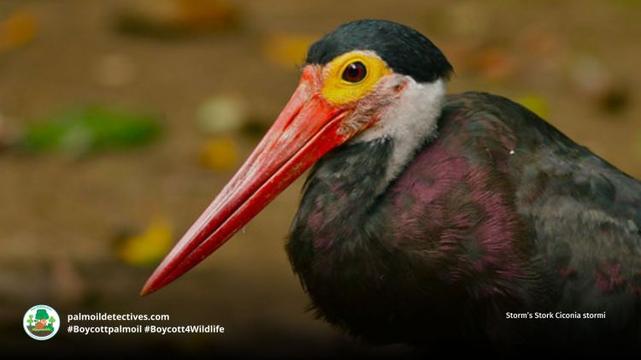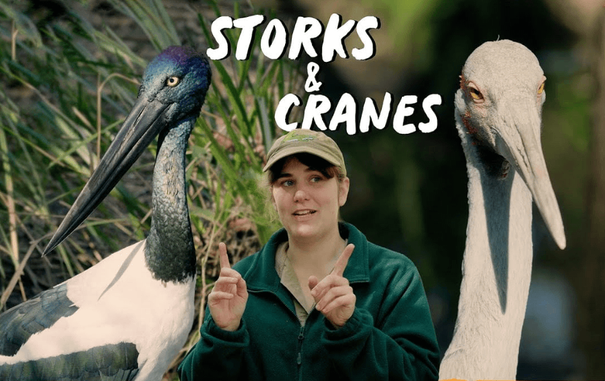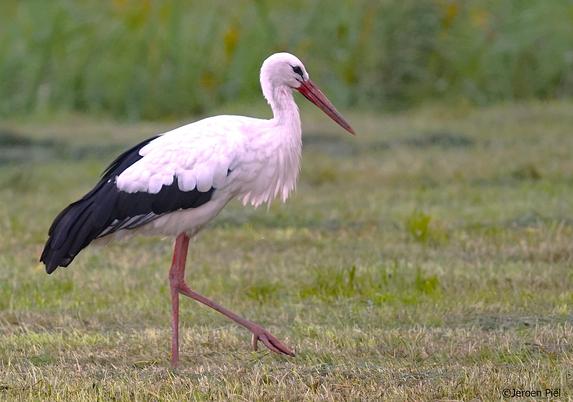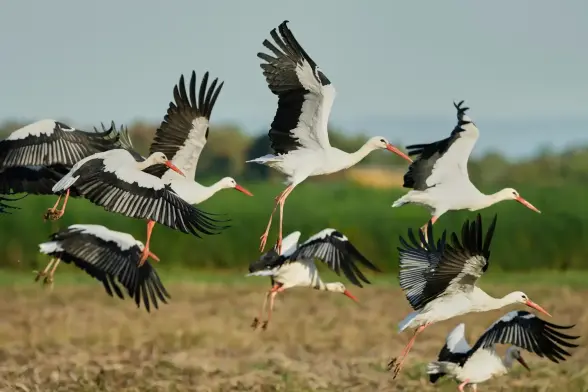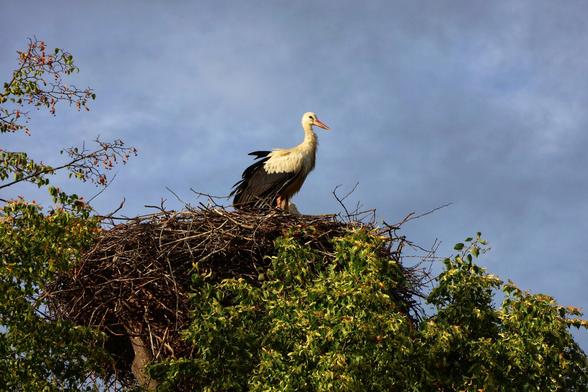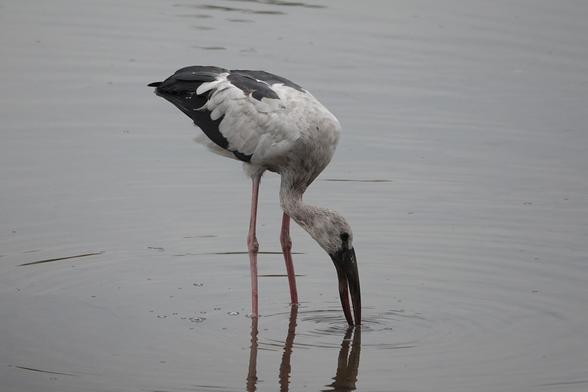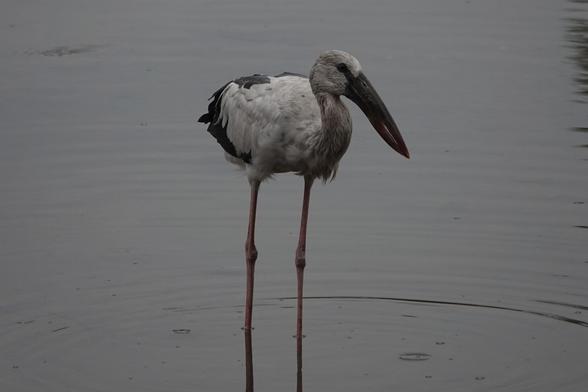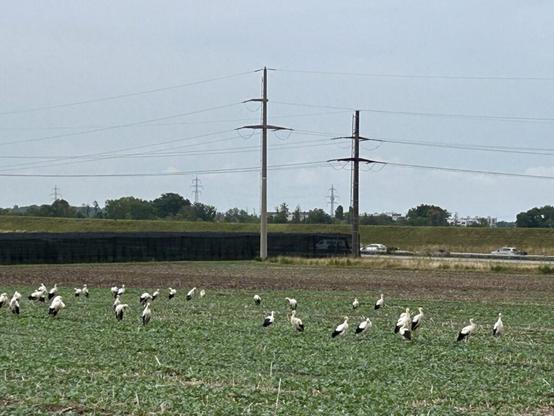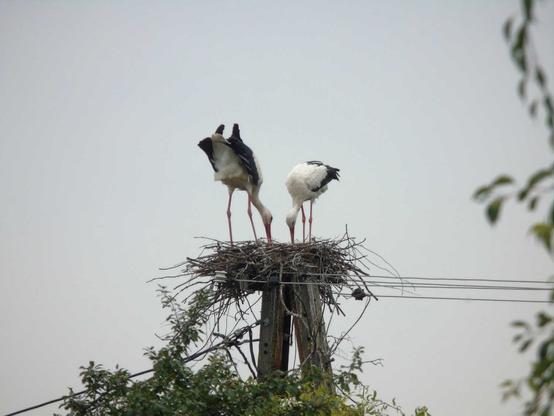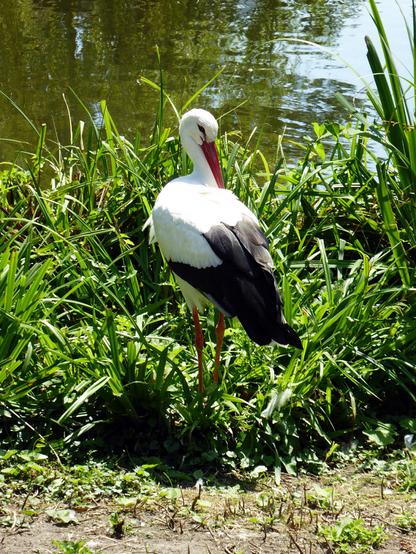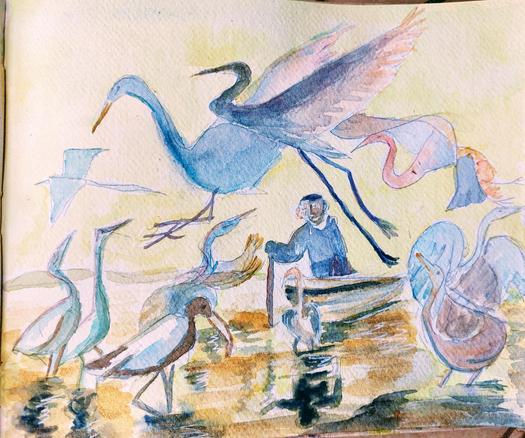Storm’s Stork Ciconia stormi
Storm’s Stork Ciconia stormi
IUCN Red List Status: Endangered
Location: Malaysia, Indonesia, Thailand, Brunei
Found in lowland riverine and peat swamp forests of #Borneo, #Sumatra, Peninsular #Malaysia, and southern #Thailand. Core strongholds include the floodplains of Sabah and peat swamps of #Kalimantan.
Storm’s Stork Ciconia stormi is the rarest and most elusive #stork in Asia, and one of the world’s most threatened. Currently listed as #Endangered by the IUCN Red List, with fewer than 500 individuals remaining in the wild, their continued survival hangs by a thread in #Malaysia #Indonesia #Thailand and #Brunei. These elegant, black-and-white #birds once ranged widely across the Sundaic region. Today, their numbers are spiralling due to large-scale #deforestation for #palmoil plantations, logging, and infrastructure projects like dams and roads that slice through their forest home.
Peat swamp #forests—critical for nesting and foraging—are rapidly disappearing. But you can help turn the tide. Use your wallet as a weapon to protect these remarkable birds. Choose products that are 100% #palmoilfree and support indigenous-led conservation. #BoycottPalmOil #Boycott4Wildlife #Vegan
Storm’s #Storks have bright red and yellow faces and live in #Malaysia 🇲🇾 and #Indonesia 🇮🇩. They’re #endangered due to #PalmOil #deforestation 🌴🔥 and hunting 🏹 Fight for them when you #BoycottPalmOil 🌴🧐⛔️ #Boycott4Wildlife @palmoildetect https://palmoildetectives.com/2021/02/05/storms-stork-ciconia-stormi/
Share to BlueSky Share to Twitter Raising two chicks per year, monogamous Storm’s #Storks of #Thailand 🇹🇭 #Malaysia 🇲🇾 and #Indonesia 🇮🇩are #endangered due to #deforestation for #rubber and #palmoil. Resist for them when you shop #BoycottPalmOil 🌴🩸🚜🔥🚫 #Boycott4Wildlife @palmoildetect https://palmoildetectives.com/2021/02/05/storms-stork-ciconia-stormi/
Share to BlueSky Share to Twitter https://youtu.be/YC-5PstWy3A?si=MdZcfzu9in0ZWeL_
Appearance and Behaviour
With their sleek black plumage, brilliant white undertail, and arresting red facial skin encircled by a yellow eye ring, Storm’s Storks are unmistakeable once seen—if seen at all. Adults stand at 75–91 cm tall, their red legs often stained white from perching high in the canopy. They are silent outside the breeding season but may utter soft whistling or a frog-like call at the nest.
Unlike many storks, they are shy and solitary, rarely seen in groups. They glide high above the forest on thermals, and are often seen alone or in pairs near quiet, muddy riverbanks. Nesting high in tall trees, often overhanging rivers, they raise just two chicks a year with intense parental care and secrecy.
Diet
Storm’s Stork feeds primarily on small fish, frogs, worms, aquatic insect larvae and sometimes crustaceans and grasshoppers. They stalk quietly along shaded forest streams and oxbow lakes, moving slowly and deliberately. Parents regurgitate these prey items into the nest for their young, with foraging usually taking place 2–3 km away from their nesting site.
Reproduction and Mating
Monogamous pairs construct large twig nests high in the canopy, often reusing the same nest over several years. Nesting takes place in primary forest close to rivers, with clutches of two eggs and chicks fledging after approximately 90 days. Breeding displays include aerial flips and ground-based mutual bowing. Both parents take turns incubating the eggs and feeding the chicks, although the female tends to remain longer at the nest.
Geographic Range
Storm’s Stork occurs at extremely low densities across Borneo (Malaysia, Brunei, Indonesia), Sumatra, Peninsular Malaysia, and southern Thailand. Borneo is its core range, especially in Kalimantan and Sabah, where it persists in lowland peat swamps and riverine forests. Once present across the Greater Sundas, it is now extinct or nearly so in Thailand and Myanmar. In Sumatra, populations remain on the Kampar Peninsula, Way Kambas, and Siberut. In Peninsular Malaysia, only small relict populations exist, mostly within Taman Negara.
Threats
Ciconia stormi is native to the swamp and plains-level forests of the Greater Sundas, where it occurs at a very low density and nowhere is numerous. Over the past three generations (31 years: 1992–2023), it is suspected of having declined rapidly (40–60%) in response to industrial removal of its habitat for agro-industry plantations, particularly oil-palm and rubber. Its global population size is uncertain, but probably numbers 300–1,750 mature individuals; with ongoing habitat loss compounded by forest fires which may increase with frequency in response to climate change, this species is considered to be a high risk of extinction in the near-term. Accordingly, it is listed as Endangered.
IUCN Red list
• Widespread deforestation for palm oil and rubber plantations has destroyed much of the lowland forest habitat that Storm’s Stork depends on.
• Peat swamp forests, their stronghold in Borneo, are being drained, logged and set alight, especially during El Niño years.
• Logging roads fragment the forest and degrade rivers through erosion and sedimentation, reducing aquatic prey.
• Forest fires intensify due to human activities, especially in drained peatlands, further eliminating habitat and nesting sites.
• Hydropower projects, like the Chiew Larn Dam in Thailand, have flooded large tracts of prime habitat.
• Hunting still occurs, though not the primary driver of decline. These sensitive birds abandon nests if disturbed.
• Captive trade was a minor historic threat; however, tamed birds in zoos are unlikely to be rewilded successfully.
• Climate change and habitat fragmentation create uncertain future conditions, especially for isolated populations on Sumatra and the Malay Peninsula.
Take Action!
Storm’s Stork is a symbol of everything we stand to lose through the reckless destruction of rainforests. You have power to stop this.
Use your wallet as a weapon and boycott palm oil. Refuse to buy from companies that drive deforestation. Support indigenous-led agroecology. Speak out against the destruction of Southeast Asia’s peat swamp forests. Take action every time you shop and #BoycottPalmOil #Boycott4Wildlife, be #Vegan!
FAQs
How many Storm’s Storks are left in the wild?
Estimates suggest only 260–500 individuals remain globally. Around 240–1,600 mature individual birds may persist in Borneo, especially in Kalimantan. Sumatra’s population may be as low as 50–100 mature birds, while Peninsular Malaysia and Thailand hold fewer than 10 pairs each (BirdLife International, 2021; Martin et al., 2024).
How long do Storm’s Storks live?
Although exact data is scarce, storks in the genus Ciconia are long-lived, with some individuals living more than 20 years in the wild. Their slow reproductive rate and long lifespan make population recovery difficult after sharp declines (Danielsen et al., 1997; BirdLife International, 2021).
Why is palm oil so destructive for Storm’s Stork?
Palm oil expansion targets the very peat swamp and lowland forests Storm’s Stork calls home. These habitats are easy to access and commercially valuable, making them first to be logged, drained, and cleared. The result is mass habitat loss, water pollution, fire risk, and collapsing food chains that leave the storks with nowhere to nest or feed (Miettinen et al., 2011; Harrison et al., 2016).
Are Storm’s Storks affected by hunting or the pet trade?
They are hunted opportunistically by forest dwellers and poachers, especially as access increases through roads. However, hunting is not the main cause of their decline. The pet trade spiked in the late 1980s, but today, habitat loss remains the overwhelming threat (BirdLife International, 2021; Martin et al., 2024).
Support the conservation of this species
Reko Forest
Further Information
BirdLife International. 2023. Ciconia stormi. The IUCN Red List of Threatened Species 2023: e.T22697685A224541343. https://dx.doi.org/10.2305/IUCN.UK.2023-1.RLTS.T22697685A224541343.en. Accessed on 23 March 2025.
BirdLife International. (2021). Ciconia stormi. The IUCN Red List of Threatened Species 2021: e.T22697655A194974787. https://dx.doi.org/10.2305/IUCN.UK.2021-3.RLTS.T22697655A194974787.en
Martin, B., Staniewicz, A., Darmansyah, S., & Karo, I. (2024). Records of the Endangered Storm’s Stork Ciconia stormi in East Kutai, East Kalimantan, Indonesia, and notes on its conservation in Borneo. ResearchGate. https://www.researchgate.net/publication/381294067
Wikipedia contributors. (n.d.). Storm’s stork. Wikipedia. Retrieved March 22, 2025, from https://en.wikipedia.org/wiki/Storm%27s_stork
Storm’s Stork Ciconia stormi
How can I help the #Boycott4Wildlife?
Take Action in Five Ways
1. Join the #Boycott4Wildlife on social media and subscribe to stay in the loop: Share posts from this website to your own network on Twitter, Mastadon, Instagram, Facebook and Youtube using the hashtags #Boycottpalmoil #Boycott4Wildlife.
✓ Subscribed
2. Contribute stories: Academics, conservationists, scientists, indigenous rights advocates and animal rights advocates working to expose the corruption of the palm oil industry or to save animals can contribute stories to the website.
Wildlife Artist Juanchi Pérez
Read more
Mel Lumby: Dedicated Devotee to Borneo’s Living Beings
Read more
Anthropologist and Author Dr Sophie Chao
Read more
Health Physician Dr Evan Allen
Read more
The World’s Most Loved Cup: A Social, Ethical & Environmental History of Coffee by Aviary Doert
Read more
How do we stop the world’s ecosystems from going into a death spiral? A #SteadyState Economy
Read more
3. Supermarket sleuthing: Next time you’re in the supermarket, take photos of products containing palm oil. Share these to social media along with the hashtags to call out the greenwashing and ecocide of the brands who use palm oil. You can also take photos of palm oil free products and congratulate brands when they go palm oil free.
https://twitter.com/CuriousApe4/status/1526136783557529600?s=20
https://twitter.com/PhillDixon1/status/1749010345555788144?s=20
https://twitter.com/mugabe139/status/1678027567977078784?s=20
4. Take to the streets: Get in touch with Palm Oil Detectives to find out more.
5. Donate: Make a one-off or monthly donation to Palm Oil Detectives as a way of saying thank you and to help pay for ongoing running costs of the website and social media campaigns. Donate here
Pledge your support #Bird #birds #Borneo #Boycott4wildlife #BoycottPalmOil #Brunei #climateChange #dams #deforestation #EastKalimantan #endangered #EndangeredSpecies #fires #ForgottenAnimals #hunting #hydroelectric #illegalPetTrade #Indonesia #Kalimantan #Malaysia #mining #palmoil #palmoilfree #poaching #rubber #SouthEastAsia #SouthKalimantan #stork #Storks #StormSStorkCiconiaStormi #Sumatra #Thailand #timber #vegan #Wetlands

